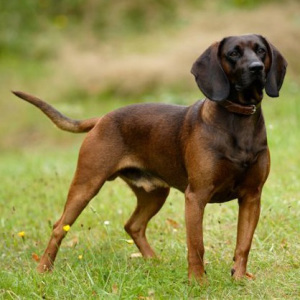

 The Accurate Reloading Forums
The Accurate Reloading Forums  THE ACCURATE RELOADING.COM FORUMS
THE ACCURATE RELOADING.COM FORUMS  Hunting
Hunting  European Big Game Hunting
European Big Game Hunting  Re: red deer carcass damage
Re: red deer carcass damageGo  | New  | Find  | Notify  | Tools  | Reply  |  |
| one of us |
It seems we are on a good side. We (the hunters) can sell the meat direct to the consumer and get so between 3 and 6 Euro. But back to the bloodmess. The quick bullets are one main factor. Also the bullet. But not all shots with low velocity do have no h�matome. It seems that the situation of the game is also one factor. My favourite meat gun for deer is my old 8x57IR with obout 700m/s (about 2100 fps) Softpoint and the result is good. Best regards | ||
|
one of us |
Speed is the capital factor in bloodshot meat, secondary factors being bullet fragility and where you hit them. Last Sunday, I shot a Roedoe behind the shoulder at about 100 m. The load was a 165 Sierra GK travelling at 969 m" (3179 ft"), exit hole was about 5 cm and upon skinning I found no haematoma. This same load will demolish both shoulders and create a mess at shorter distance. | |||
|
one of us |
Quote: I agree -- this is why I find myself liking my .375 H&H more and more, and my 7mm Rem Mag less and less... jpb | |||
|
| one of us |
This is interesting, as it might explain some of the differences one does indeed observe with animals shot with either the same or equivalent calibers/bullets/distances, yet some are bloodshot, and some are not. The problem for most normal people, is that there are so many variants, that it is almost impossible to get an overview of what works and what does not, simply because we don't have the opportunity to witness enough animals killed. I know of a hunter/butcher in Switzerland who compiled similar information, but he was working with meat delivered to him by the hunters, so availability of data like Johan referred to above to was probably sketchy at best. His conclusion at the time: stay away from the small and fast calibers (for roe). - mike | |||
|
| new member |
In reading this thread I was surprised to see that no one mentioned what Johan has written above. For me this is a major factor in how much blood damage there is and where it is situated on the carcass. Blood damage steming from the bullet tend to be situated within the meat itself while blood damage from the animal running after the shot tends to be situated between different muscle groups and between membranes. At least this has been my observations based on processing the roe deer and moose shot by me and my friends (I've butchered/helped butcher maybe 400 roe, about 30 moose and a few boars and deer, and have in most instances had accsess to a very happy hunter giving me all (!!!) details  ) )Cheers K9 | |||
|
one of us |
Quote: Indeed. The more movement, the more blood is pumped out into the muscle tissues. After a shot through the front legs one can also save some future cleaning work, or meat damage, by making a cut between the chest and the leg - nearly cutting of the front legs. This will be done anyway when the game is butchered, but it will provide a great possibility to take away blood that will go bad much faster than the meat when the carcass is hung. | |||
|
| Moderator |
Johan, I have never considered the distance an animal runs as being a factor in the amount of blood shot meat so thank you for bringing that up! I will mention this to a couple of friends and we will see how it relates to our expireinces! Mike, I think you are correct in saying that the large number of variables make it difficult to draw hard and fast conclusions..I think that is what is so facinating about stalking; the longer you stalk the more you realise how little you in fact really know! Regards, Pete | |||
|
| one of us |
Gentlemen, one thing I have noticed is that bonded core bullets tend to cause much less damaged meat than non bonded core bullets. They also do much less damage to smaller animals that you might want to mount lifesize. | |||
|
| Powered by Social Strata |
| Please Wait. Your request is being processed... |
|
 The Accurate Reloading Forums
The Accurate Reloading Forums  THE ACCURATE RELOADING.COM FORUMS
THE ACCURATE RELOADING.COM FORUMS  Hunting
Hunting  European Big Game Hunting
European Big Game Hunting  Re: red deer carcass damage
Re: red deer carcass damage

Visit our on-line store for AR Memorabilia

